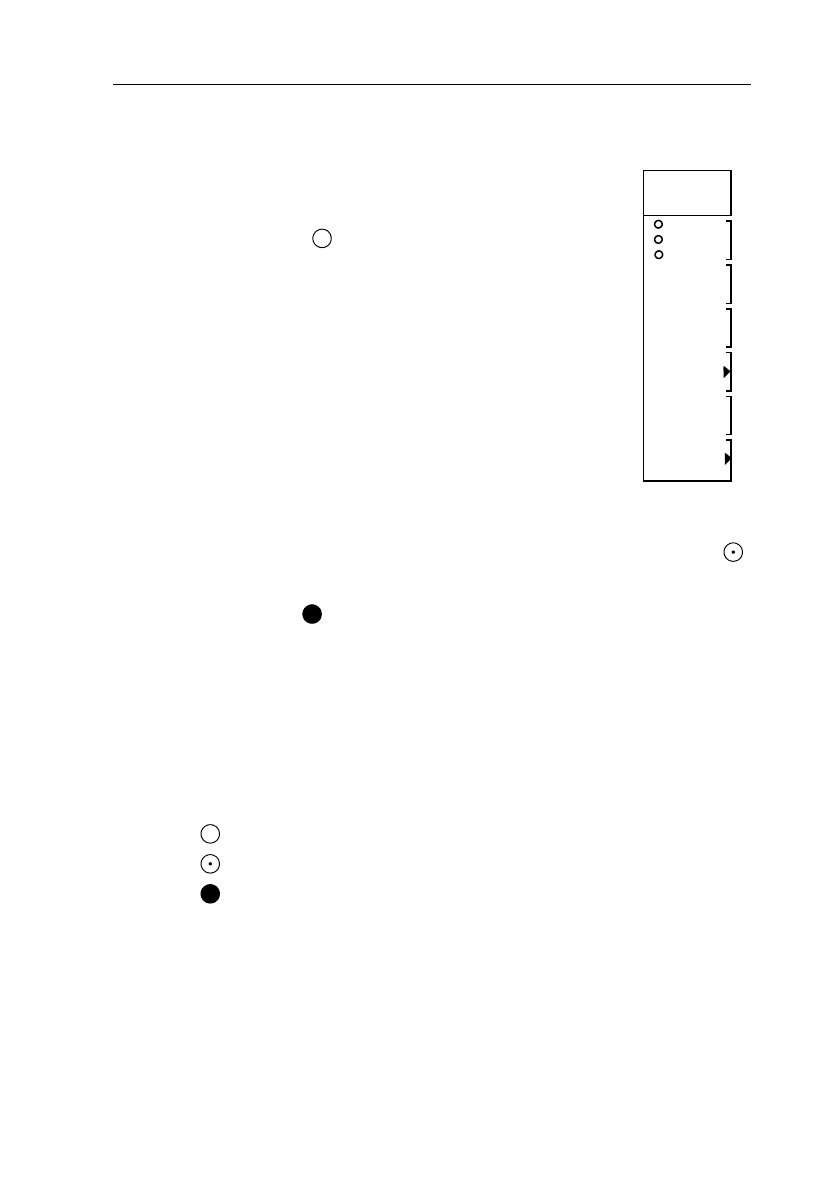
GETTING STARTED 3 - 23
Here is how traces are stored in memory:
Step 6 Use the TRACK control to select an empty memory
location such as m1, m2, or m3. Empty locations are
marked with a circle in front of the memory location
number (e.g., m3).
Step 7 Press the second blue softkey (’save’). You have
now saved the acquisition signal into memory
’register’ m3. A single register can contain a set of up
to three traces (e.g., CH1, CH2, and EXT (trigger
view)). In this case only one input channel was
turned on, so that only one was stored.
Step 8 Remove the probe from CH1. Now recall the stored
trace.
Step 9 Press the RECALL key.
Step 10 Select the previously filled memory register m3 with the TRACK
control. A memory register with trace information is indicated with
Step 11 Press the second blue softkey to turn on the display of this register.
Indicated by
Step 12 Turn the ∆ control to separate the acquisition (live signal) and the trace
recalled from memory.
NOTE: You are now able to operate nearly all the oscilloscope’s functions in
most routine applications. Please continue with Chapter 4 for a more
detailed description of the oscilloscope’s many advanced features.
Memory indications:
Empty register
Filled register
Displayed register
ST6705
CLEAR &
PROTECT
m2
m3
m4
SAVE ACQ
TO
MEMORY
save
clear
copy


















